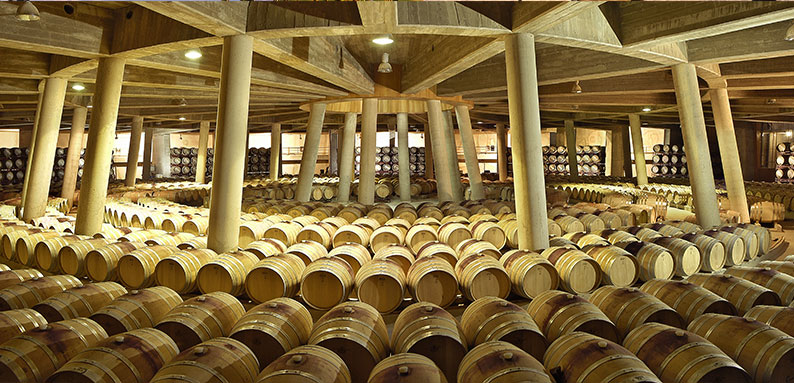CVNE
CVNE (Compañía Vinícola del Norte de España) is one of the most renowned and historic bodegas in all of Spain. Founded in 1879 by the Real de Asúa brothers, Eusebio and Raimundo, the company has been an integral part of the Rioja region’s ascendance in the world of fine wine. With their combination of traditional roots and innovative vision, CVNE has been one of Rioja’s most reliable sources for high quality wine. The company is still run by descendants of the Real de Asúa brothers, now represented by the fifth generation with current CEO Victor Urrutia Ybarra.
Since its founding, CVNE’s goal has been to increase the scope of production while maintaining the level of quality on which their reputation was built. Forty years after the original bodega was created, CVNE expanded into the Alavesa region with the separate Viña Real facility; each winery’s flagship bottlings occupy a well-deserved place in the pantheon of great Spanish wine.
CUNE
Cune is the winery where the company began in 1879. It still sits on its original site, Barrio de la Estación, in Haro, Rioja Alta, directly next to the train station. They produce white, rosé, crianza, and reserva wines, sourced almost entirely from Alta fruit. Additionally, Cune produces a sub-label called Imperial (named for the original half-liter “Imperial pint” bottling) which releases Reserva and Gran Reserva bottings in exceptional years.
The bodega in Barrio de la Estación boasts an impressive collection of 19th century structures which surround a central patio. Chief among the architectural wonders is the Nave Eiffel, designed by Alexandre-Gustave Eiffel. This room, begun in 1890 and completed in 1909, is a textbook example of the marriage of aesthetics and functionality. The roof is supported by metal trusses which crisscross the room at regular intervals, thus eliminating the need for columns and making for a more efficient use of space.
The beauty of the winery notwithstanding, the real wonders of Cune are found below ground. To walk through the dank, dimly-lit cellars is to trace the history of the bodega, vintage by vintage, era by era. Through civil war, regime change and the march of technology, Cune has remained a constant in the cultural iconography of Spain.
Viña Real
Viña Real, CVNE’s Rioja Alavesa-based winery, released its first vintage in 1920. The Viña Real style is one that showcases the forward fruit of Alavesa while simultaneously possessing the structure to age for half a century and more. The original fruit source was in the Elciego area, in the heart of Rioja Alavesa. Those vineyards were located adjacent to the old Camino Real, from which the wine takes its name. Nowadays, the grapes are principally sourced from sunny south-facing slopes which run from the Sierra de Cantabria mountain range down to the Ebro River. As is also the case with the Cune line, the Viña Real wines are produced from over 50% estate fruit, an unusually high percentage for Rioja.
The new Viña Real facility was completed in 2004 from a design by the Bordelaise architect Philippe Mazieres. The winery is situated on top of the hill known as Cerro de la Mesa and commands sweeping views of both the Alavesa vineyards and the town of Logroño, Rioja’s commercial center. The heart of the facility is a huge circular chamber which, when viewed from the outside, resembles the upper portion of a giant wine barrel. Inside, the facility is a marvel of modern technology. The above- ground portion houses the winemaking facility, which was designed with the goal of complete reliance on gravity-flow, made possible in large part by a rotating central crane. Below this is the main ageing room where the barrels rest in concentric circles around the central axis. The facility also features twin tunnels dug into the center of the hill where the bottle ageing takes place.
If the Cune bodega represents CVNE’s commitment to tradition, the Viña Real bodega demonstrates their forward-thinking philosophy and their embrace of modern technology.




